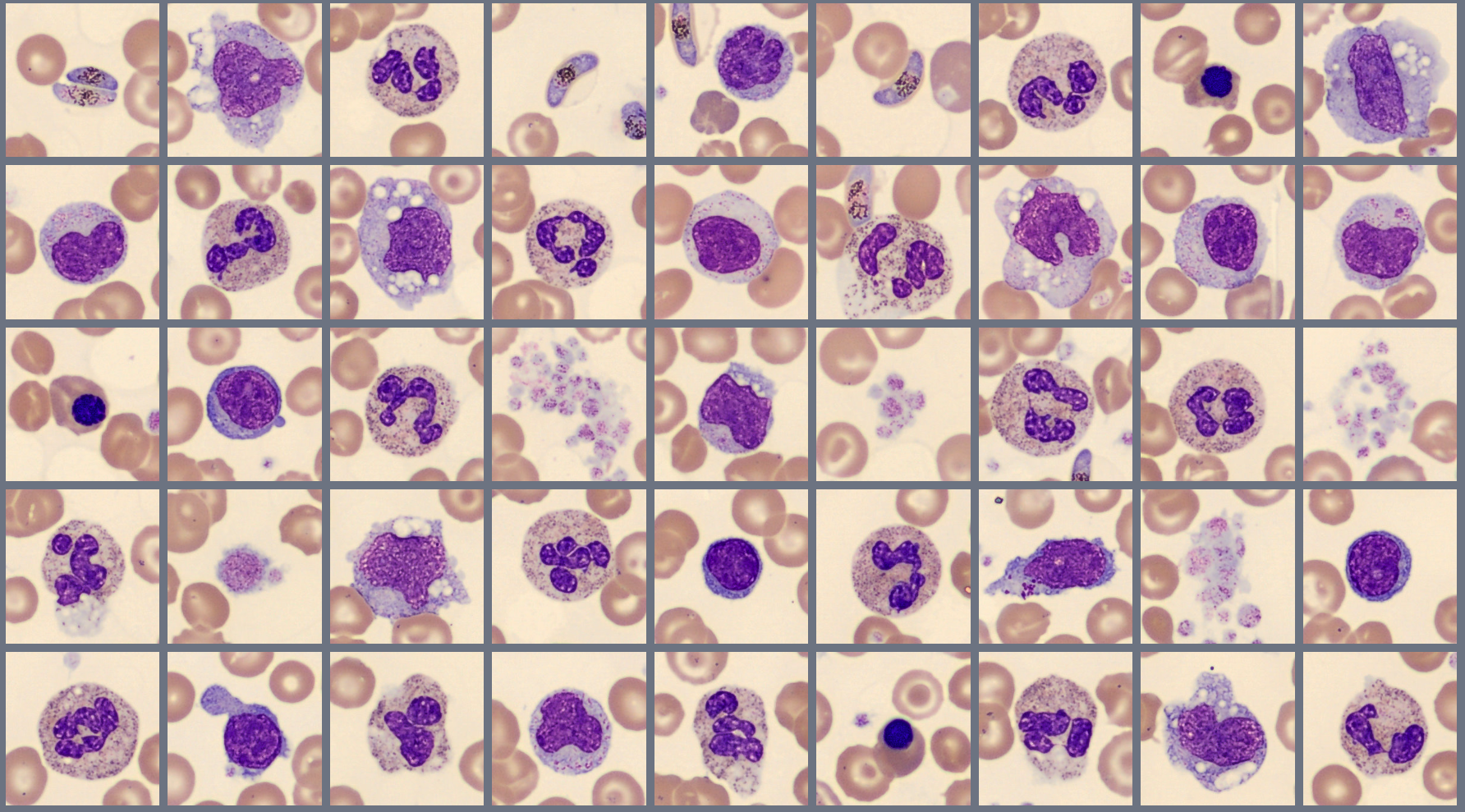CellaVision Global Test 2023:1 - Plasmodium falciparum malaria
Case Description
A 28-year-old female who recently returned from Africa presented with:
- Headache
- Fever
- Malaise
- Dyspnea upon exertion
- Abdominal pain and vomiting
- Hepatosplenomegaly
Laboratory findings:
- WBC: 5.7 x 109/L
- HGB: 8.1 g/dL
- MCV: 92.6 fL
- PLT: 497 x 109/L
- Reticulocytes: 7.9 %
- Increased ALT (SGPT), AST (SGOT), total bilirubin, and LDH
- Creatinine 2.1 mg/dL
Sample of cells that the Global Test participants classified

Case Conclusion
This was a symptomatic adult with a recent history of travel to Africa. Laboratory findings included moderate normocytic anemia, reticulocytosis, mild thrombocytosis, and abnormal liver and kidney function studies.
The peripheral blood film revealed both intracellular and extracellular parasites resembling Plasmodium falciparum malaria, numerous target cells, mild/moderate polychromasia, mild anisocytosis, occasional Howell Jolly body, rare pappenheimer bodies, several platelet clumps, 7.4 NRBC/100 WBC, slight relative monocytosis and apparent increase in the number of large granular lymphocytes.
Global Test 2023:1 Result Webinar
Questions discussed during the webinar include:
- How to determine if LGLs are increased? When should LGL be noted in the differential report and if so how?
- How should external parasites preclassified by Cellavision in the WBC differential be classified by the user?
- How to explain the presence of target cells, anemia, polychromasia, NRBCs, and Howell Jolly bodies.
- How to differentiate between challenging lymphocyte vs monocyte cells